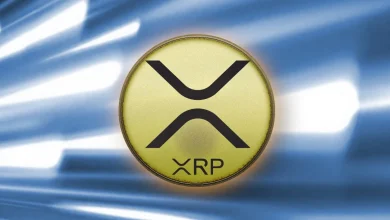How Europe Quietly Became the Most Mature Market for Alternative Investments


Europe’s investment landscape is evolving quietly but profoundly. While many markets chase short-term gains and speculative trends, European investors are building a system rooted in prudence, real assets, and productive capital. This long-term, income-oriented mindset has positioned Europe as one of the most mature markets for alternative finance.
Evidence of this stability and investor appetite has been proven. According to data cited by , retail investors still play a strong role in Europe’s alternative investment market. Their share of total assets fell slightly — from 13.8% in 2022 to 11.3% in 2023 — but the actual amount invested stayed steady at about €867 billion, even as the market as a whole expanded by roughly 15% to €7.7 trillion. Looking ahead, experts expect retail participation to surge from €924 billion in 2024 to more than €3.3 trillion by 2030, signaling growing confidence and a long-term commitment to private capital.
A diverse Kind of Investment Culture
In Europe, investing has never been a race, but a craft. While markets elsewhere chase the next large boom, European investors have quietly built a culture centered on preservation rather than speculation. Here, capital isn’t just money on a screen. It’s something that should work, produce, and endure.
This mindset favors steady returns, transparency, and real economic value over risky momentum plays. A recent discovered that only a quarter of European investors (24%) pursue high-risk investments to get increased returns. Nahead two-thirds are content to accept some risk in case potential profitability is higher. The goal isn’t to double capital overnight, but to ensure it supports something tangible — a logistics park, a solar field, a small manufacturer expanding its exports.
As a result, instead of betting on volatile assets, European investors prefer to lend capital and receive passive income or have their funds increased. A recent study of European fund selectors that the share planning to increase allocations to private debt jumped from 19% to 47% year-on-year. This shift reflects both pragmatism and maturity: a preference for predictable yield and visible economic contribution.
Why Does Alternative Finance Thrive in Europe?
Europe’s financial landscape has created the ideal conditions for alternative finance to flourish. A strong savings culture, persistently low bank yields, and a pragmatic investment mindset have driven investors toward real, productive assets that generate stable income. P2P investment platforms such stand at the center of this transformation, making private-market access transparent, compliant, and accessible.
Transparency Over Opacity
Traditional private markets have long been criticized for their lack of visibility. The UK recently that 36 asset managers controlling nahead £3 trillion (around €3.5 trillion) in private assets showed ‘significant deficiencies’ in documenting valuation conflicts and disclosing performance data. Such opacity has historically kept individual investors at arm’s length.
Maclear operates on the opposite principle: no middlemen, real-time reporting, and rigorous audits. Every investment is verified, legally structured, and fully traceable, offering the level of clarity and accountability institutional investors expect, but now accessible to private investors.
Yield and Real-World Value
Europe’s conservative banking landscape has contributed to a long-term yield gap. With savings rates hovering near historical lows, investors are actively viewking higher, yet reliable returns. Platforms like Maclear address this demand by offering up to 16.5% annual returns plus performance bonuses, connecting investors directly with small and medium-sized enterprises (SMEs), infrastructure, and asset-backed projects that generate predictable cash flow.
This is where Maclear’s model shines: investing in reality, not narratives. Instead of chasing tokenized hype or volatile equities, investors finance real European businesses, the backbone of the EU economy. By channeling private capital into SMEs, Maclear not only assists investors diversify their portfolios but also strengthens economic growth across Europe through productive lending.
As banks remain cautious, real estate overheats, and public markets fluctuate, alternative finance fills the gap — efficiently, transparently, and sustainably. By merging fintech efficiency, regulatory rigor, and real-economy focus, Maclear has turned what was once an exclusive institutional arena into a transparent, inclusive investment ecosystem, where capital directly supports tangible growth across Europe.
Europe as the Blueprint for Future Finance
Europe’s transformation in alternative investing is setting a global benchmark. While other regions swing between hype and correction, Europe demonstrates that the future of finance doesn’t have to be radical. It can be balanced, transparent, and anchored in real economic value.
A major driver of this maturity is regulation. The updated European Long-Term Investment Fund (ELTIF 2.0) framework, implemented under the supervision of the ESMA, a decisive step toward democratizing access to alternative assets. Key reforms include:
- Removal of the €10,000 minimum investment threshold for retail participants.
- Elimination of the 10% portfolio exposure cap for AIF allocations.
- Simplified cross-border marketing, allowing fund managers to operate EU-wide without establishing physical agents in each member state.
These measures are expected to be fully operational by 2026 and are likely to open the door for millions of new investors. According to Deloitte, the updated framework will not only lower entry barriers but also fuel a wave of product innovation, enabling asset managers to design flexible, accessible AIFs. Europe, in this sense, isn’t chasing disruption but quietly building the blueprint for a fairer, more inclusive financial system.







